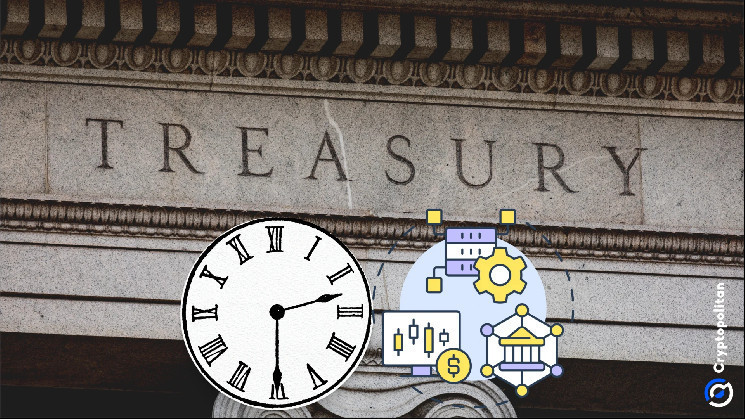In response to the CNBC Treasury yields monitoring instrument, Treasury yields proceed to dip because the U.S. monetary area awaits the subsequent inflation charge, client value index, and producer value information on November 13. The info, primarily based on the economic system’s efficiency in October, will make clear the U.S. financial well being.
Immediately, the 10-year Treasury yield fell by about 0.032%, reaching 4.3062% at a value of $99.5469. The share is decrease in comparison with the yield 5 days in the past, which was about 4.4490%. The two-year Treasury yield has additionally dropped to 4.2519%, in comparison with the yield 5 days in the past, which stood at 4.2990%.
Treasury yields spiked after Trump’s victory within the November 5 presidential elections. Nevertheless, they dropped extra on November 11 as a result of anticipation of elevated inflation charges in October. In response to CNBC, the anticipated rise within the client value index is about 0.2%. The expected improve would have boosted the year-on-year inflation charge to 2.5%.
Core inflation, however, is predicted to stay regular at 0.3% month-to-month and three.3% yearly. The producer value index is predicted to rise 0.3% in October whereas recording a 2.3% rise previously 12 months.
The U.S. experiences the worst Treasury bond sell-off in years
Large 30 12 months bond public sale at the moment at 1pm est$SPY $SPX $QQQ $VIX pic.twitter.com/dKIP7CCWrD
— Zero-Sums (@wizard_coder) November 6, 2024
The worst bond sell-off within the U.S. in 5 years occurred final Wednesday following Trump’s reelection. The federal government offered about $25 billion of 30-year bonds, attracting bids of about $66 billion. The bonds have been auctioned at 4.608%.
The yields, consequently, surged and noticed their first acquire after a multi-month backside. Some economists mentioned they have been involved after the steep rise, with one suggesting measures to stop the yields from crossing the 4.5% mark.
Others defined that the rising yield triggered the U.S. Greenback to strengthen. The Chief Funding Officer at GDS Wealth Administration defined that the strengthening economic system was an indicator of preparation for potential deficits within the U.S. finances.
Economists concern that Trump’s coverage modifications may improve inflation
Economists are frightened in regards to the risk that Trump’s financial coverage modifications may affect an increase in inflation. To date, the Fed has been making an attempt to push the inflation charge decrease to get to its 2% goal. The central financial institution has notably reached its goal, hitting 2.4% in September. The Fed lower charges for the primary time in 4 years on September 18 to work towards the objective. The central financial institution initiated one other charge lower in the course of the November 7 Federal Open Market Committee (FOMC) assembly.
The Fed has been much less aggressive within the November lower, deciding on a 25-basis-point rate of interest lower in comparison with September’s 50-basis-point charge lower. The newest lower positioned the borrowing charge at 4.50% to 4.75%. The goal was to encourage U.S. residents to borrow extra whereas controlling printing cash unnecessarily to keep away from an inflation set off.
Nevertheless, economists have argued that Trump’s insurance policies may encourage an inflation rise regardless of the Fed’s efforts to maintain it low. Extra importantly, a number of economists mentioned that Trump’s tax cuts coverage may set off finances deficits and improve U.S. money owed.
One economist talked about that Trump has a historical past of undisciplined fiscal insurance policies. The MD of mounted and strategic revenue at Eagle Asset Administration, James Camp, argued that the deficits may very well be the headlines for the approaching 12 months.
“The chance available in the market with Trump is an undisciplined fiscal scenario. In some unspecified time in the future in 2025, the deficit will seize the narrative of the market.”
–James Camp, MD of mounted and strategic revenue at Eagle Asset Administration
The sentiment aligned with different economists’ worries after the large bond sale as markets put together for an inflation rise. Some economists additionally mentioned the opportunity of a better bond distribution.



